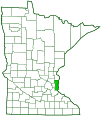pond olive
(Cloeon dipterum)
Conservation • Description • Habitat • Ecology • Distribution • Taxonomy
|
|
||||||||||||||
Description |
Pond olive is a small minnow mayfly. It occurs throughout Europe, where it is native, and in Asia and North America, where it has been introduced. The earliest North American record is from Illinois in 1953. It is now widespread across the continent. In the United States it is currently mostly restricted to the northeast and to Washington state. It is rare in Minnesota. Nymphs are found mostly in ponds, but also in the shallow margins of lakes and in slow areas of rivers and streams. They feed on algae, small aquatic organisms, and organic debris. Adults are found on vegetation near ponds. They do not feed and seldom live more than 1 or 2 days. Adults are reddish-brown, 3⁄16″ to ¼″ (5 to 7 mm) long, and have a wingspan of ½″ to 1″ (13 to 25 mm). The body is elongated, slender, and very soft. The abdomen has 2 very long hair-like sensory appendages (cerci). The antennae are short, bristle-like, and inconspicuous. The mouth parts are small, poorly developed, and non-functional. The compound eyes on the female are on the sides of the head. On the male the compound eyes have additional large, orange, turban-like parts that meet at the top of the head. These adaptations are said to allow the male to isolate in a swarm females that are not yet paired with another male. The last part of the leg (tarsus), corresponding to the foot, has 3 or 4 segments. The forewings are clear, triangular, very large, and have many veins. They are held together above the body when at rest. There are five cross veins at the tip of each wing. The second terminal branch (M2) of the front (anterior) branch of the first fork of the media vein is nearly straight. Longitudinal veins in the outer part of the wing between the two branches of the cubitus vein (Cu1 and Cu2) are not in 2 parallel pairs. Some authors say that pond olives have no hindwings. Carl Linnaeus in 1761 described the hindwings as “hardly present.” |
Size |
Total length: 3⁄16″ to ¼″ (5 to 7 mm) Wingspan: ½″ to 1″ (13 to 25 mm) |
Similar Species |
Habitat |
Ponds, lake margins, rivers, and streams |
Ecology |
Season |
May to September |
Behavior |
|
Life Cycle |
After mating the female retains 10 to 14 eggs in her abdomen until they are fully developed (ovovivipary). She lays them in water where they hatch almost immediately. Pond olive is the only ovoviviparous mayfly in Europe. Nymphs overwinter in frozen over ponds which have little dissolved oxygen. They live in the water from 6 months to 3 years, undergoing up to 21 molts. Eventually, they swim to the water surface or crawl onto emergent vegetation or rocks to complete the second-to-last molt. This subadult stage has functional wings and is called a subimago. They fly to nearby vegetation and molt one last time, emerging as adults. |
Nymph Food |
Small aquatic organisms, algae, and organic debris |
Adult Food |
Adults do not feed |
Distribution |
||
|
Sources |
|
| 10/12/2024 | ||
Occurrence |
||
|
||
Taxonomy |
|
Order |
Ephemeroptera (mayflies) |
Suborder |
Pisciforma |
Family |
Baetidae (small mayflies) |
Subfamily |
Cloeoninae |
Genus |
Cloeon (double-gilled pond creepers) |
Subordinate Taxa |
|
|
|
Synonyms |
|
Cloeon cognatum Chloeon dipterum Cloe diptera Cloeon inscriptum Cloeon pallida Cloeopsis diptera Ephemera diptera |
|
Common Names |
|
pond olive pond small minnow mayfly |
|
Glossary
Cercus
One of a pair of small sensory appendages at the end of the abdomen of many insects and other arthropods. In Odonata, one of the upper claspers. Plural: cerci.
Tarsus
On insects, the last two to five subdivisions of the leg, attached to the tibia; the foot. On spiders, the last segment of the leg. Plural: tarsi.
Visitor Photos |
||
Share your photo of this insect. |
||
This button not working for you? |
||
Alfredo Colon |
||
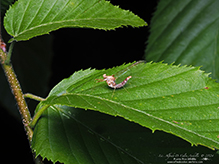 |
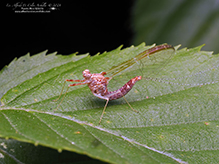 |
|
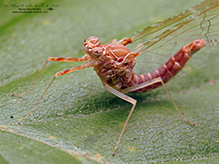 |
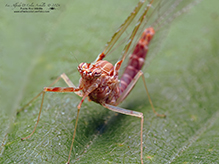 |
|
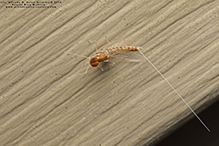 |
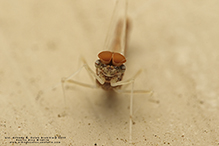 |
|
MinnesotaSeasons.com Photos |
||
|
||
|
||

Slideshows |
|

Visitor Videos |
||
Share your video of this insect. |
||
This button not working for you? |
||
|
Other Videos |
||
Cloeon dipterum |
About
May 5, 2015 Larvae and Imago |
Gewone tweevleugel Cloeon dipterum, mannetje imago |
About
Jun 7, 2016 3-6-2016, Egmond-Binnen (Nederland). Gewone tweevleugel Cloeon dipterum, mannetje imago. Identification Daan Drukker. Insecta (Insecten, insects, Insekten, insectes), Ephemeroptera (haften, eendagsvliegen, mayflies, Eintagsfliegen, éphémères, éphéméroptères) |
Group 12: Mayflies - Olives (Cloeon dipterum) nymph |
About
Apr 4, 2020 Cloeon dipterum nymph (Mayfly - Olive), Pond, Handforth Dean, Cheshire, United Kingdom, 27 March 2020. |

Created: 11/6/2020 Last Updated: © MinnesotaSeasons.com. All rights reserved. |
